Is Amazon taking over the world? Well, I’d estimate that I spend half of my paycheck on Amazon Prime. Whether it be stocking up on paper towels and cleaning supplies, buying random kitchen products, or ordering my favorite snacks in bulk, it’s hard to resist the convenience and affordability of Amazon.
If you’re not an Amazon shopping fanatic like myself, your customers likely are. There are 300 million Amazon users, and it’s estimated that 80 million Americans are Amazon Prime members! 80 MILLION! In fact, more American households have Amazon Prime accounts than attend church regularly or have a landline phone!
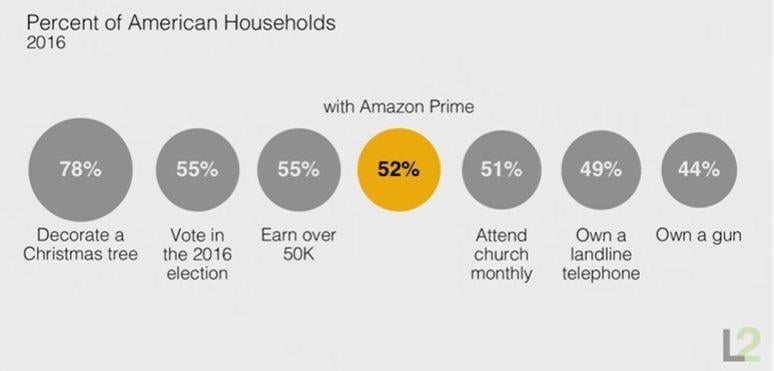
With so many users making purchases on Amazon, they know a whole lot about us…
“Google has search data, and Facebook knows interest levels, but Amazon has real power because it knows what people are buying and how they’re doing it,” says Shareen Pathak in Digiday.
So, why aren’t you advertising on Amazon to get more eyes on your products? If you’re all over Google Shopping, the Display Network, Facebook, and Instagram, well, there’s no better time to break into one of the largest remaining online ad networks. For e-commerce businesses, Amazon ads should be a no-brainer.
I’ve created this guide to walk you through the basics of getting started with Amazon ads to get more eyes on your products, and ultimately higher returns!
A multi-channel ecommerce strategy is an effective ecommerce strategy. Download our free guide to Google Shopping and start spreading your brand today!
What Are Amazon Ads?
Similar to how Google search works, when you type in a keyword in the Amazon search box and results appear, some of the top results will be sponsored posts – these are considered Amazon ads. They are denoted with subtle “sponsored” or “ad” text like in the image below.
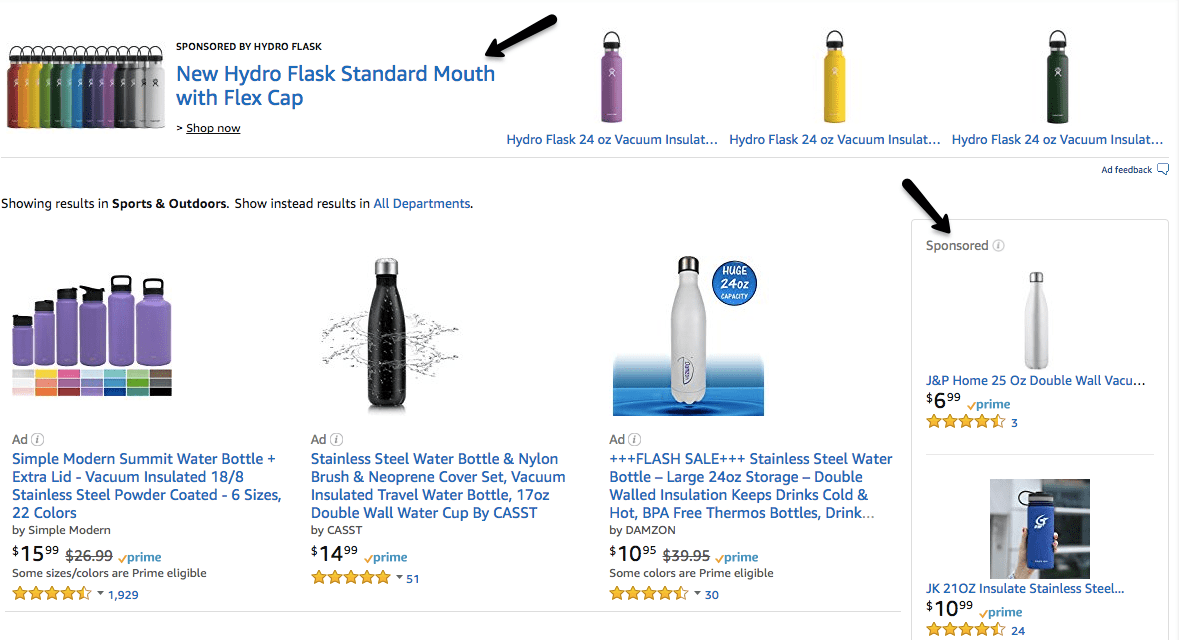
Advertisers who want to gain more visibility to their products on Amazon can pay for these positions by bidding on specific keywords, which will lead to higher visibility in the Amazon SERPs. The advertiser will then be charged when a shopper clicks on their ad. You can essentially see Amazon’s advertising platform as the Amazon version of AdWords.
Amazon ads can also appear on individual product pages. For example, when looking at the water bottle below I can see an add for sunglasses on the far right hand side of the page.
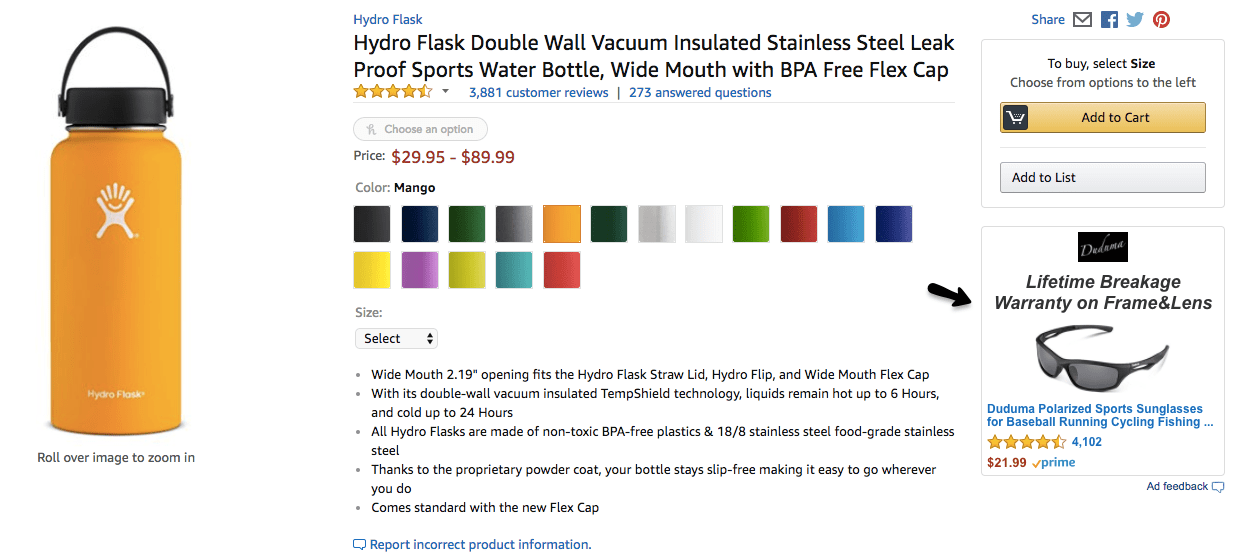
As I scroll down the page, I’ll find even more ads!
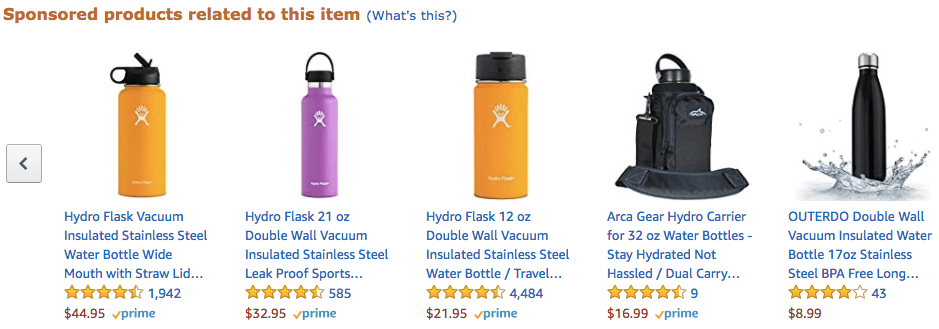
However, there are many types of Amazon ad options beyond these sponsored search posts, some of which we’ll explore in this guide.
Should I Advertise on Amazon?
Are you selling a tangible product that consumers can purchase online? If the answer is yes, then the answer is yes, you should be advertising on Amazon! Amazon will just supply you with another way to get more eyes on your products and likely more buyers.
If you’re hesitant, then start small with a product that you already know sells well online. For instance, if you sell sports gear and tennis rackets have always been your top-selling online product, start with an ad for your top-selling racket. Once you start to see an ROI with this ad, incorporate more brands and types of rackets to expand your campaign.
Another compelling reason to advertise on Amazon is that if you’re doing Amazon PPC, your organic Amazon rankings will likely improve as well. “We’ve repeatedly seen that organic ranking has been considerably improved for those keywords that were used successfully in Amazon PPC ads,” says Sellics. “This is in part due to extra sales that have been generated by ‘Amazon AdWords’ enhancing the sales history of the product. Sales history is a very strong ranking factor. If a product sells better, then Amazon will place it higher up in the ranking of search results.”
So not only is it possible to boost your product sales by investing in Amazon ads, but it could also boost the organic rankings of your products. Could life get much better?
Amazon Advertising Costs
So how much do ads on Amazon run?
According to Rob Sieracki at Practical Ecommerce, the average cost per click on Amazon is rarely more than $0.35, making it more cost-effective on a CPC basis than search ads on AdWords or Bing Ads and comparable to some of the lowest CPC’s on Facebook ads or Google display. Considering that Amazon searches show a lot of commercial intent, those are promising numbers! (Later in this guide, we’ll share some tips to help lower your Amazon advertising costs.)
Self Serve Ads vs. Premium Ads
When you begin exploring Amazon’s public advertising information pages you might be a bit confused on the difference between self-serve and premium ads in the two sidebars shown below:
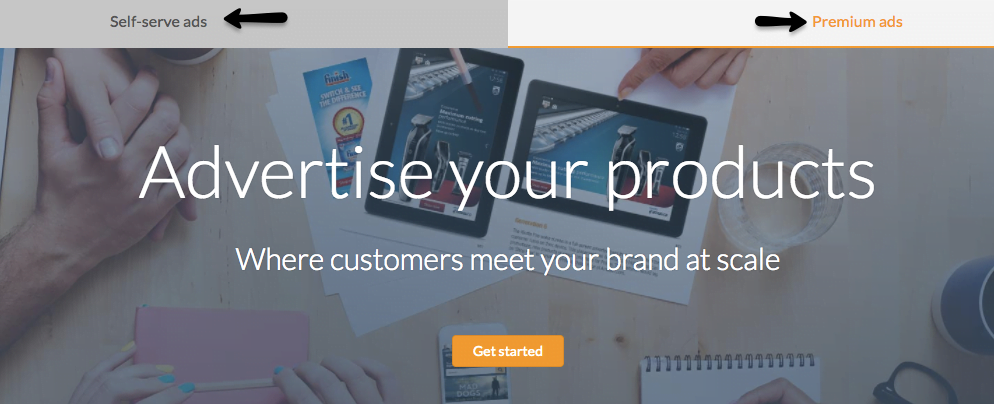
The simplest way to explain the difference is that self-service ads function like Google search ads displaying on the search result pages (like the screenshots I included above), where premium ads function more like display ads. While premium ads can still be found on Amazon, they show up as more visual banner and side bar ads like the one below. They can also appear on other websites, similar to how Google’s Display Network works.
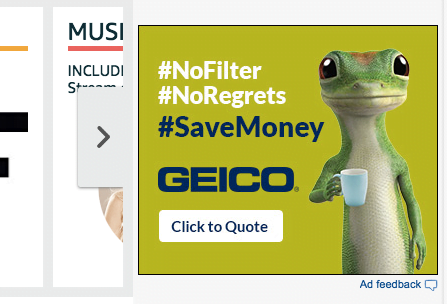
Getting Started with Amazon Ads
To start advertising on Amazon you’ll first need to sign into your seller or vendor account.
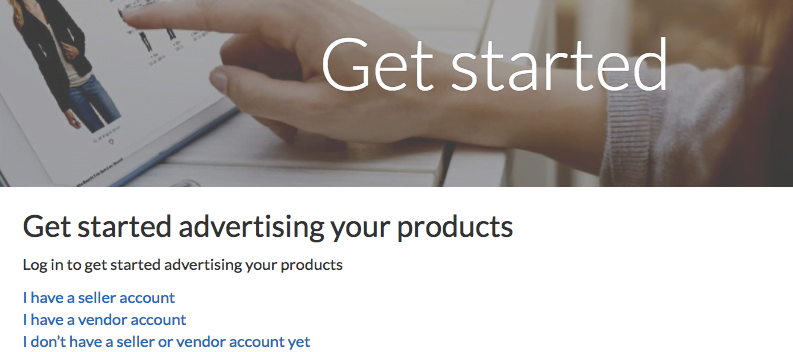
If you don’t have either of these accounts you can check out their various pricing and plans to fit your needs here. If you’re a first-party seller then you’ll want to sign-up as a vendor, which is unfortunately by invitation only. If you’re selling via Amazon Seller Central you’re considered a third-party seller. Seller Central has pricing options for pay-as-you go for independent sellers vs. a pro option for those with higher sale volume. Pro merchant sellers also have the option of letting Amazon manage shipping, returns, and customer service, which is not a bad perk! Lastly, Amazon has a Vendor Express option that might be worth exploring if you’re interested in going the vendor route, but are lacking an invitation.
Once you’re logged into you’re signed up for the correct plan, you can log in to your Amazon account you start setting up your ad campaigns!
Types of Amazon Ads
So you have some nice banner ads for branding purposes from your creative team that you’d love to promote, but you’re also looking to simply drive more e-commerce sales with Google Shopping like ads. Luckily, you’ve come to the right place because Amazon provides options! There are three main types of ads you can configure through Amazon including sponsored products ads, headline search ads, and product display ads.
Amazon Sponsored Product Ads
Sponsored product ads operate similar to ads run through the Google Shopping Network. These are the ads that drive Amazon searchers directly to a specific product you’re selling on Amazon.
When shoppers click on your sponsored product ad, they’ll be directed to the ads product detail page. Sponsored product ads are typically displayed above or below the search results page, as well as on other product detail pages. These ads are keyword-targeted, and advertisers have the option of choosing from exact, phrase, or broad match types. Advertisers also have the control of setting a daily budget, as well as the campaign duration. While the campaign can be paused at any time it must run for at least 1 day.

Headline Search Ads
Headline search ads display in the search result pages as headline banner ads always above the result listing, like the example below. These ads are cost-per-click, and lead searchers to any specified page on Amazon.
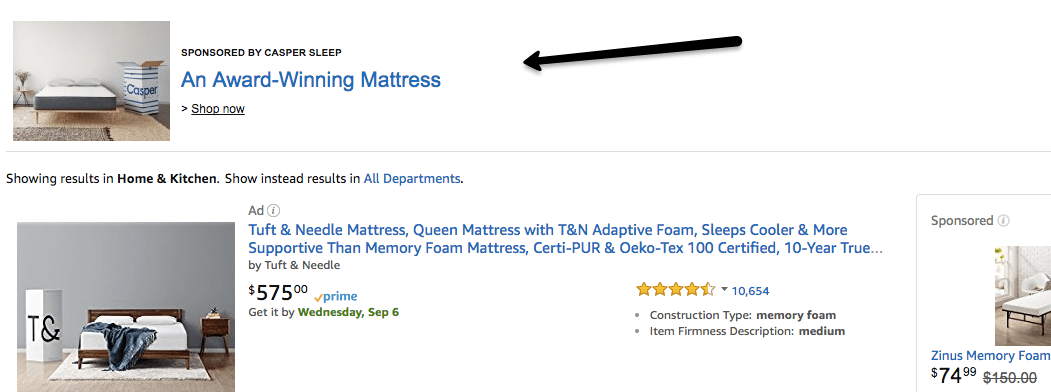
This landing page is typically a customized branded page like the one below that Casper Sleep directed me to when I clicked on their headline ad.
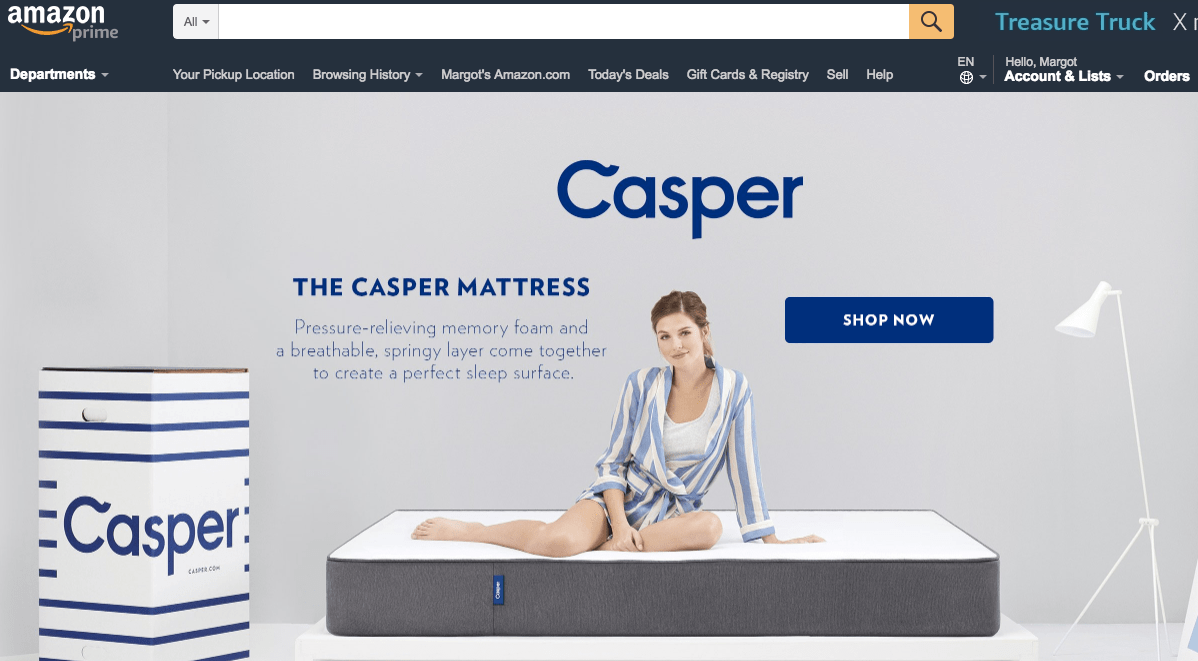
These ads are also keyword targeted, and can be used to promote 3 or more products together. Headline search ads also use a cost-per-click method where the minimum bid per keyword is $0.10. There are also only two keyword match-types supported for headline search ads – exact and phrase match. Lastly, the minimum campaign budget for these ads is $100, with a limit of $1 spent per day. Campaigns can be scheduled to run up to four months in advance.
Amazon Product Display Ads
Lastly, we have product display ads that work a bit differently then the two ad formats above. These ads are not keyword targeted, but rather interest or product targeted display ads. They drive shoppers to the products detail page and are also priced by a cost-per-click method.
Advertisers can select from a long list of products (for example, similar products to what you’re selling) or interests (for example, if the shopper is interested in running) to target these ads to relevant shoppers. It’s important to note that each campaign is limited to one target type. These ads can appear to the right or at the bottom of the search results, on the customer reviews page, at the top of the offer listings page, as well as in Amazon marketing emails.
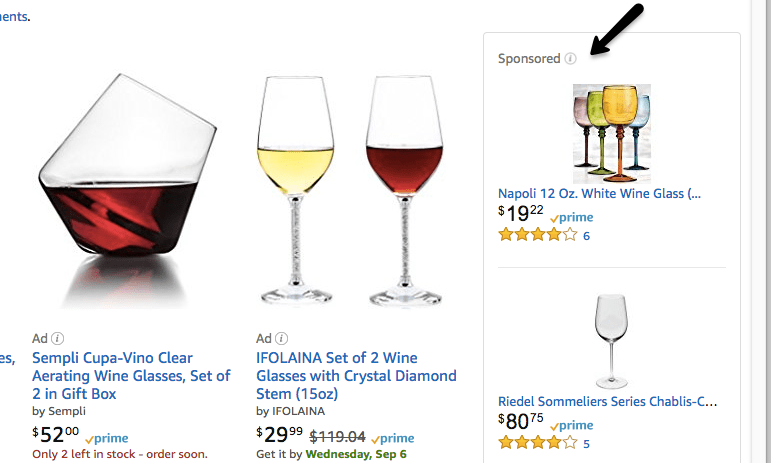
How to Optimize Your Amazon Ads: 6 Tips
Among all of the products on Amazon, you might be doubting that the platform could yield your business a return. Luckily, there are a few things you can do to stand out from the competition in the massive Amazon marketplace. It just requires going into it with an informed Amazon advertising strategy.
Here are six tips to get you started on the right foot.
#1: Create Well-Structured Campaigns by Product Category
If you’re an experienced AdWords advertiser this is something you’ve likely already mastered. You can use your AdWords organizational skills to structure your campaigns and ad groups with Amazon’s ad platform. The best strategy here is to have a separate campaign of each of your main product categories, and then under each campaign create ad groups that are more specific. For example, let’s say you sell women’s athletic wear; you might decide to start with three of your top-selling products:
1) Women’s workout pants
2) Women’s workout shirts
3) Women’s sports bras
Under each campaign you should create ad groups around more specific categories. For example, in campaign #1 you might have three ad groups – women’s yoga pants, women’s running pants, and women’s lounge pants. Then you’ll want to create a list of relevant keywords for each ad group (I’d recommend staying between 15-30 keywords per ad group). Finally, you’ll craft relevant ads for each keyword grouping.
A solid account structure will ensure your ads are relevant, which will in turn save you money and increase your ROI. This tip is an extremely critical one to reap the benefits of advertising on Amazon.
Check out this guide on AdWords account structure if you’re new to the game.
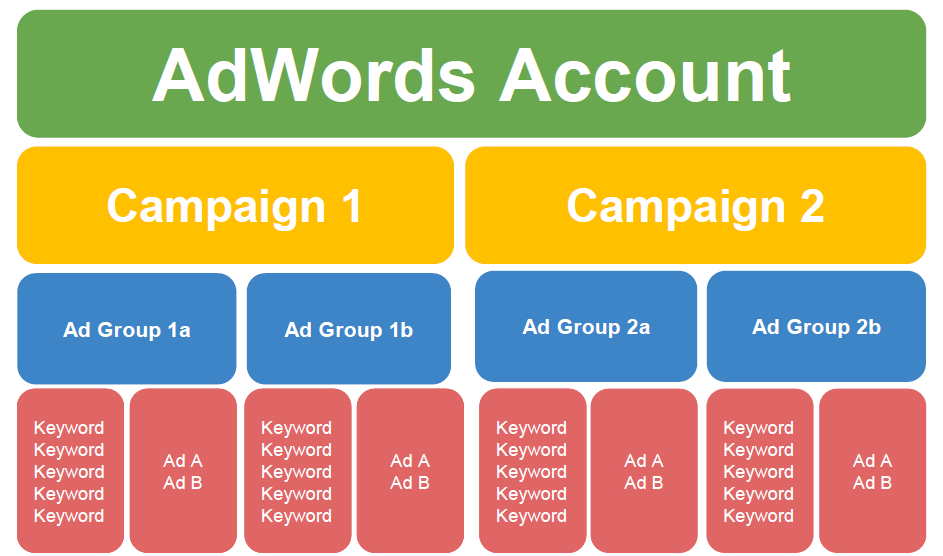
#2: Create Compelling & Urgent Ad Copy
Ensure your ad text is not only accurate in terms of what you’re selling, but try and insert some creativity and humor into your ads if possible. Standing out is more important then ever amongst the cluttered search results of Amazon. Instilling a sense of urgency can also be helpful. For instance, if you’re running a sale or promotion make sure to highlight this in your ad like the one below.
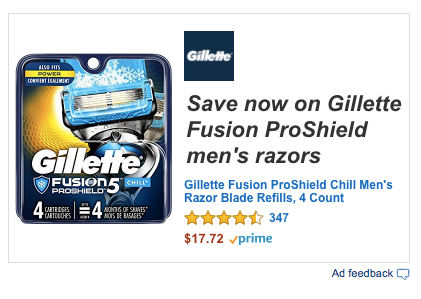
#3: Ensure Your Ad Copy is as Specific as Possible
Your ad copy should also be very specific in terms of what you’re selling. For example, if you’re selling a water bottle I want to know how many ounces/cups of water it holds, if it’s BPA free, if it keeps my water cold for up to a certain number of hours etc. While it might be hard to expose all of this information in the ad text, it’s important to jam the most important information in there. The ad below is a great example of one that does this well because I know the weight, height, and what this product comes with from reading the headline.
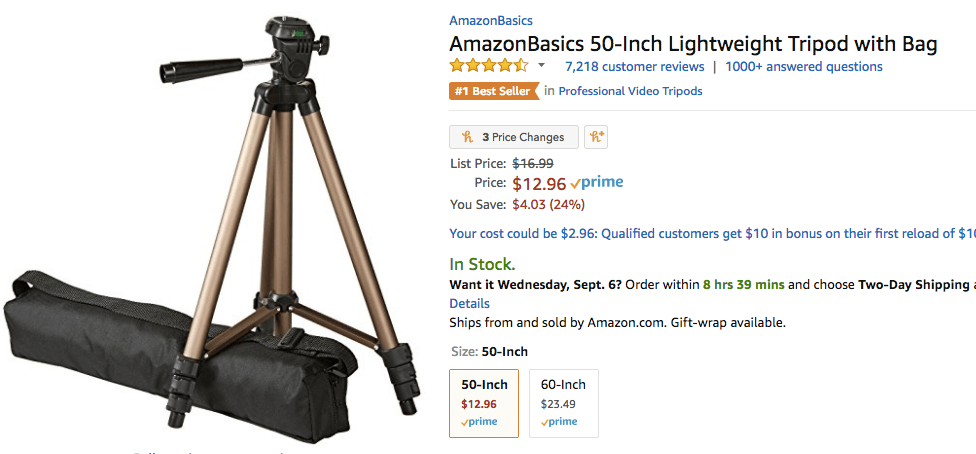
#4: Bid on Popular Brands That Sell Similar Products
When brainstorming keywords to bid on, don’t forget about your well-known competitors. For instance, if you sell backpacks you should be bidding on terms like “L.L. Bean backpacks” and “Northface backpacks” because these are well-known brands that are commonly searched for and purchased. This will allow you to gain exposure and pursue someone to buy your much cooler, less well-known brand name backpack.
To find your top competitors, do a generic search on Amazon for products in your vertical – say, “backpacks” – and see which brands come up the most in your search results.
#5: Experiment with All Three Ad Formats
While sponsored product ads might appear to yield the fastest and most visible ROI, headline search ads might lead to more loyal, repeat buyers. It’s worth experimenting with all three ad types to see which yields the highest returns, and then once your statistics can paint a clear picture you can re-allocate your budget based of the results of your campaign.
[More: Why You Need the Amazon Buy Box, and How to Get It]
#6: Use Negative Keywords (& Be Conservative with Match Types)
Just like when advertising on Google, negative keywords are key to reducing wasted spend from irrelevant clicks. For example, if you’re selling musical flutes, and bidding on the word “flutes” with broad or phrase match then someone could type in champagne flute and your ad could still populate. If they then accidently click on your ad you’ll be charged for a click from someone searching for a $10 glass rather than a quality musical instrument.
It can also help to be more conservative with your match types, steering clear of broad match, and putting a higher emphasis on phrase and exact match. Make sure to conduct some keyword research to ensure you’re targeting the right words as well. Check out big, easy guide to keyword research for help!
There’s much more to explore in the world of Amazon advertising, and I’d predict the platform is only going to grow its scope of tools. Are you advertising on Amazon? Comment with your experience, we’d love to hear about it!







